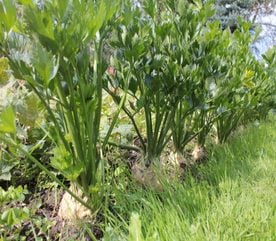Types of Plant Beds and Borders for Your Garden Landscape
Beds and borders fall loosely into four categories: single, herbaceous, shrub and mixed. The style of border you choose for your landscape may well depend on the amount of time you have available for planting and maintenance.

Single Theme Borders
Single plant or theme borders contain just one type of plant: for example, bulbs, annuals, bedding, roses, herbs, fruit or vegetables. Once popular, they are for the most part labour intensive. Contemporary gardens tend to be small and the modern lifestyle increasingly hectic, so space and time have largely made single-theme beds impractical for many gardeners. However, they can prove very rewarding for those with sufficient time to produce multi-coloured beds and borders of spring and summer bedding plants for seasonal impact, or those who seek to design a bed dedicated to just one single colour theme or a single type of plant, such as heathers or hostas. Single-theme beds are also practical where plants are selected to suit very special conditions, such as marginal plants in a boggy area, or plants of Mediterranean or Californian origin to go in warm, dry soil.
Herbaceous Borders
A well-designed herbaceous border can look stunning from late spring right through until mid-autumn, provided the right choice of plants has been made. Big, showy herbaceous borders, with large clumps of each perennial, preferably repeated at intervals throughout the planting, create the best impact. Smaller beds and borders of herbaceous perennials can make interesting features, but the plants should be scaled down in height and spread to look right proportionately. It can be difficult to maintain interest in an herbaceous border throughout the winter and early spring, even if perennials that flower very late or very early or have evergreen leaves are included. A herbaceous border requires a reasonable amount of regular maintenance, such as staking, tying, deadheading and cutting back; otherwise it can become very unruly as the summer progresses.
Shrub Borders
Shrub borders became highly fashionable in the latter half of the 20th century as a response to a shortage of time or inclination to undertake regular planting, weeding, deadheading and tidying up. A well-designed shrub border can contain plants with flower interest throughout the year,a wide selection of foliage and bark textures and colours, a variety of heights, and a good balance between deciduous and evergreen shrubs. Further effects can be achieved by selecting evergreens whose leaves change colour before falling and those whose young shoots differ in colour from the mature growth.
To create a different effect in each season needs careful planning, otherwise a shrub border can look much the same whatever the time of year. A well-planned shrub border is probably the least time-consuming way of dealing permanently with a large area of ground, especially if weed-reduction measures such as mulches, ground-cover sheeting and modern herbicides are also used.
Mixed Borders
A mixed bed or border containing a selection of different types of plants, such as hardy and half-hardy annuals, bulbs, herbaceous perennials, shrubs and small trees, roses and herbs is possibly the best way of ensuring year-round interest in the garden. With such a wide scope, a thoughtfully planned layout can provide a picturesque, varied border every day of the year. Although each type of plant has its own maintenance requirements, the mixed border should be reasonably low-maintenance provided the right choice of plants has been made. For very low-maintenance planting schemes, shrubs can be grown slightly closer together than the recommended spacing. Alternatively you could mass plant a single variety of shrub, conifer, prostrate rose and/or dense-leaved herbaceous perennial so they act as weed-smothering ground cover.
Whatever style of border you choose, to get the best out of it you should always include some evergreens to prevent the plot looking bare in winter. These can be incorporated by way of a hedge, a screen of climbers, a specimen shrub or conifer dotted among other plants, a dwarf edging plant, or a group of perennials with interesting winter leaves.



